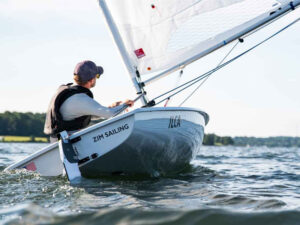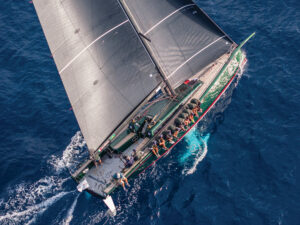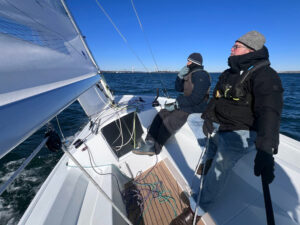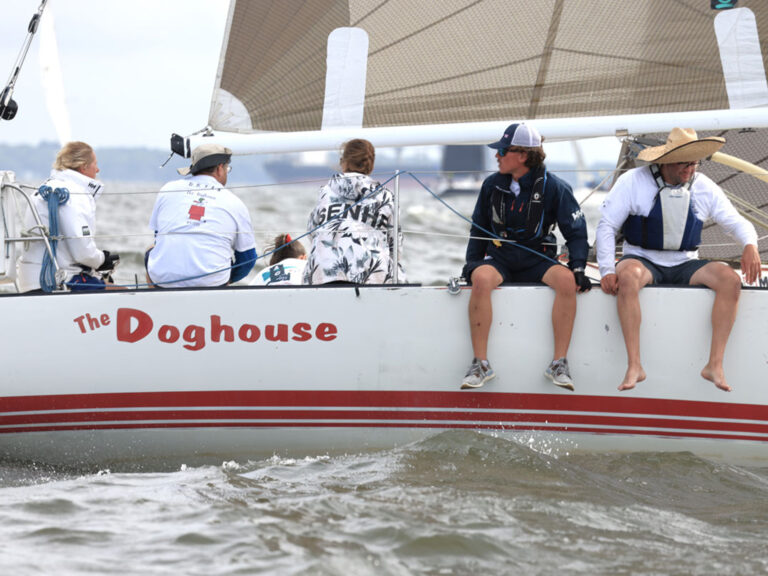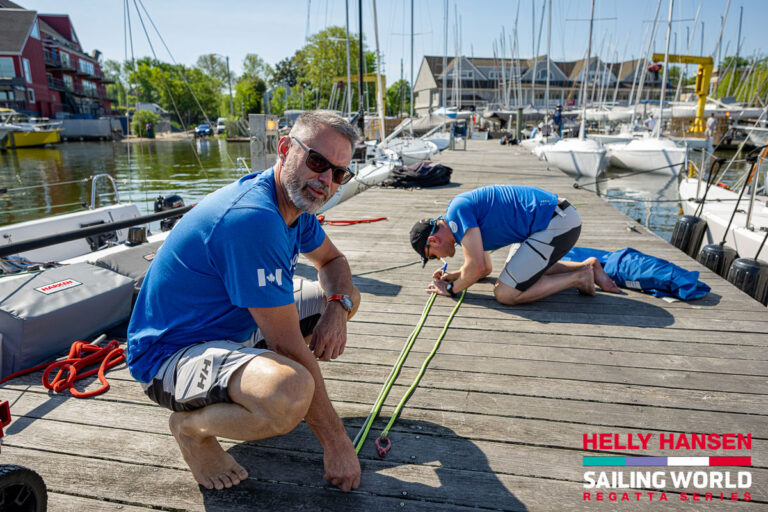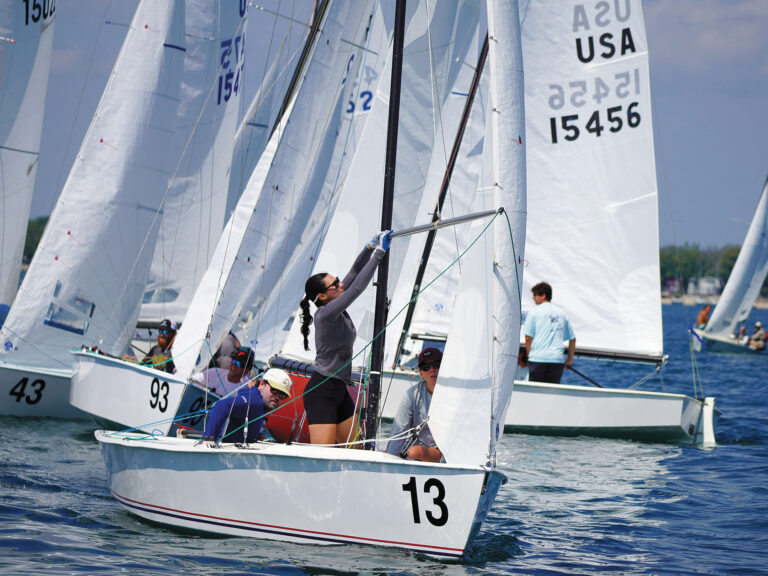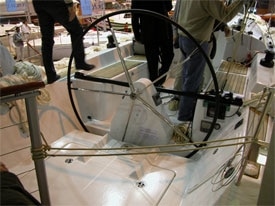
First 10R
The Paris Boat Show is one of three big shows held each year in France, and it’s where buyers go to order a boat in time for delivery the next spring. In Europe, where it’s known as the Salon Nautique de Paris it’s a big deal. As a result, manufacturers go all out, especially Beneteau, which takes up a big chunk of floor space in the huge show with boats, offices, a Beneteau clothing boutique, and lounge areas. The big shots sit behind closed doors in back offices doing business with dealers, while sales personnel work the floor, answer questions, and write up orders for new boats at one of the many tables available for that reason. Hostesses serve tiny plastic cups of espresso, and while “no smoking” signs are all over the building, everybody’s puffing away with abandon. Since the Salon Nautique attracts so many sailors, it’s also a great place to introduce new models. Of particular interest to racers worldwide this year was the introduction of the latest First from Beneteau, a much-anticipated 32-foot racer/cruiser designed by Farr with a retractable bowsprit for an asymmetric spinnaker (a first for Beneteau), a huge steering wheel, a spacious cockpit with an open transom, and a t-shaped lead and cast iron keel. In France, the new boat is called the First 34.7, and dealers began selling it before the first boat rolled out of Beneteau’s prototype factory and headed for Paris. The French name for the boat wasn’t a hit with the American Beneteau dealers, who thought the 34.7 part of the name was one, inaccurate, and two, would be perceived as too close in size to the popular First 36.7. At a meeting held the first day of the show, attended by the most successful U.S. dealers and upper-tier Beneteau management, a vote was taken and a new name was given to the American version of the 34.7. We caught up with Beneteau U.S. head Wayne Burdick shortly after the vote and were told that, in the States, the boat would be marketed as the First 10R. Beneteau has positioned the 10R as a one-design boat, which will also do well under IRC, and the numbers appear to support that. We learned at the Paris show that the IRC rating for the 10R (with the standard aluminum rig and boom) is 1.020, a number that the head designer of Beneteau’s First series, Eric Ingouf, seemed very pleased with. Ingouf also said that the VPP for the First 10R indicates the boat will be faster than the 36.7, which rates 1.027, on certain points of sail. The IRC rating is for a 10R with the standard aluminum rig, but a carbon fiber Hall mast and boom is an option. The 10R is the first Beneteau to use the company’s proprietary “One Shot” infusion process, in which the hull and structure are molded at the same time even distribution of the resin throughout the fiberglass cloth is achieved. The hull and deck are cored (except below the waterline, where the hull is solid glass) which makes for a light hull for a boat the 10R’s size, around 9,300 pounds. The 10R will be powered with an 18-horsepower Yanmar Saildrive engine, which should move the boat along well under power. The innovation doesn’t stop at the construction. The Farr and the Beneteau design offices have hit a home run with the interior by moving it forward to provide more space for the cockpit. In place of a vee-berth forward is the head, which may be the best possible space in any 32-foot boat (aside from an empty compartment) to perform spinnaker takedowns. It’s roomy, and all the edges are rounded, so it will be hard to snag and tear the kite. The deck is covered with molded nonskid and has a drain in the center for those inevitable wet spinnaker takedowns. The hatch, which is shaped like ¾ of a circle with a flat edge, is huge, and will allow the kite to be quickly stuffed/sucked down below. The sprit pole retracts into the head compartment, and has two gaskets to prevent water intrusion. The forward-facing nav station is to starboard, immediately abaft the companionway, and the L-shaped galley is across from the nav station to port. Aft to starboard is an owner’s stateroom with a double bunk, to port a single. Both aft berths are further forward than in traditional designs, which helps keep weight out of the stern. In the middle of the cabin a centerline table is flanked by two settee berths/seats. On deck, it’s also easy to see how much thought went into this Farr-designed racer/cruiser. The cockpit is large enough to handle a racing crew, and downright luxurious for shorthanded cruisers. The wheel is large and fits into a recess in the deck, and the traveler and main controls are just forward of it. Twin Harken winches control the headsails, and two smaller Harkens are each aft of a bank of Spinlock XT rope clutches for the halyards, which lead aft from the mast. The first boats will be built in Beneteau’s French factory, and Burdick expects molds for the American plant in South Carolina to be shipped soon. www.beneteau.com

